Catching up
Well it's been some time since this blog was updated. Years in fact. I've been inactive on the astro front for most of that time due to stiction issues with a mount that I was never able to resolve. Unfortunate, but it happens in this field when you try to make do on a budget.
In January last year I decided to bite the bullet and get a brand new Skywatcher EQ6-R mount so I could get back on the horse. As you can imagine the pandemic threw that through a loop shortly after and I didn't end up receiving the mount until about 9 months later due to supply and shipping issues. I wasn't too upset though, in the grand scheme of things what's a few more months when it's already been years, especially given the circumstances.
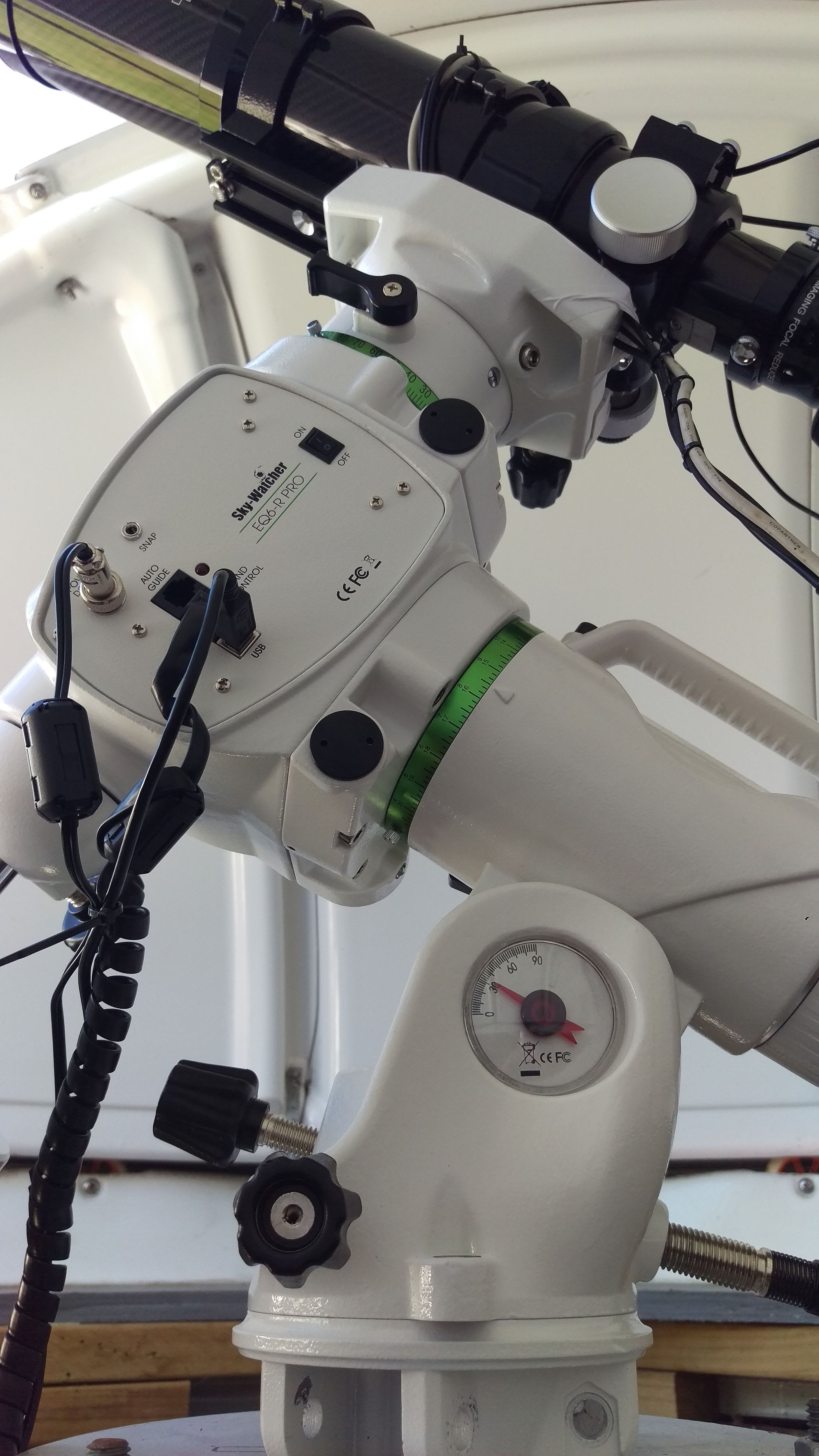
It took a bit more time to adapt my pier and observatory to accommodate the new mount. Instead of getting a pier plate I elected to use the mounts tripod head. I'm not sure why more people don't do this as it does save a penny. I had to lathe the central tripod head bolt and buffer it with washers to secure it to my existing plate/platform but this cost is minimal compared to that of a custom plate. Potentially there could be issues with rotation in the azimuth, especially if you bump it, but I've never had it be a problem. Once the mount was in place everything worked pretty much perfectly.
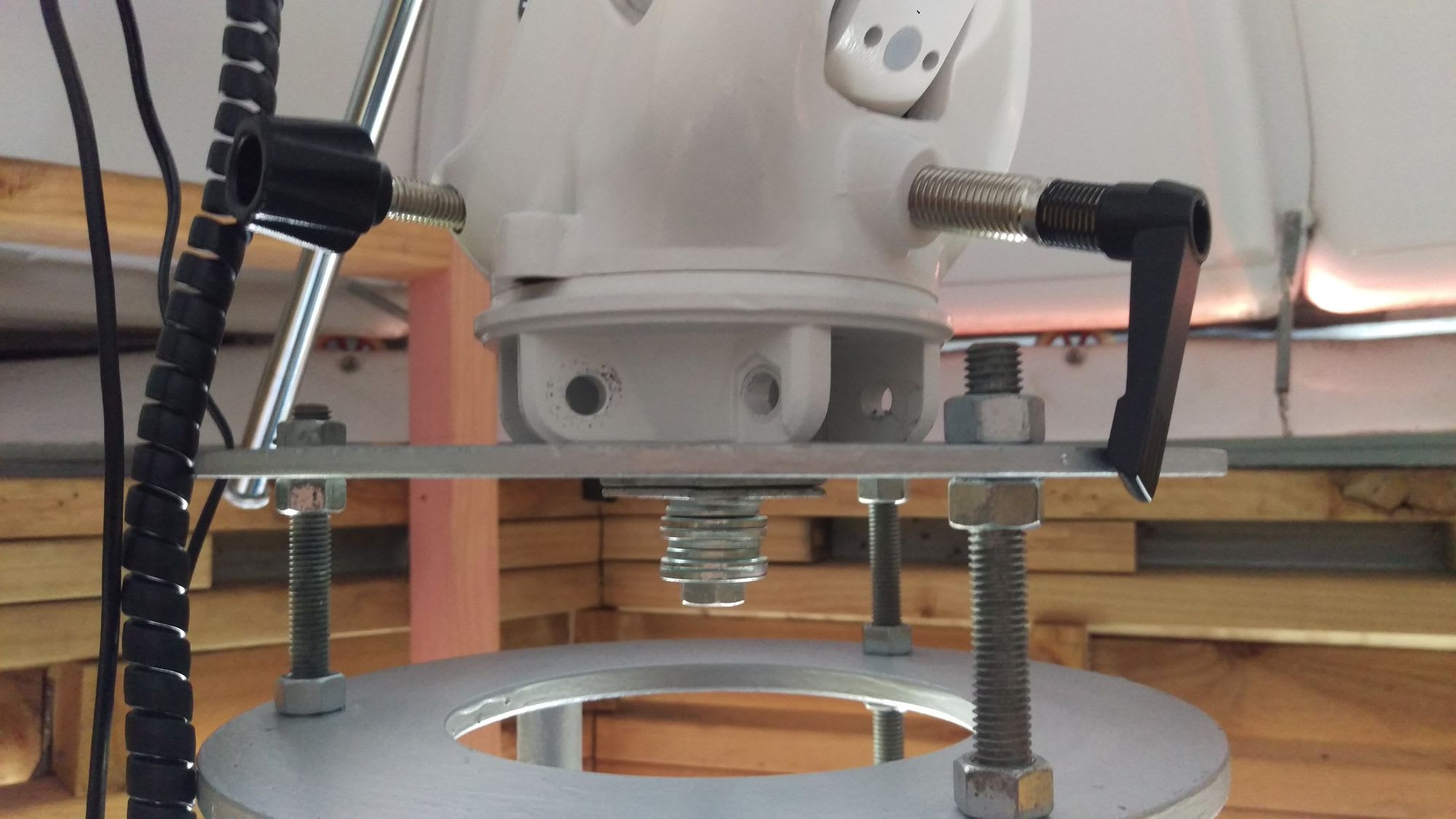
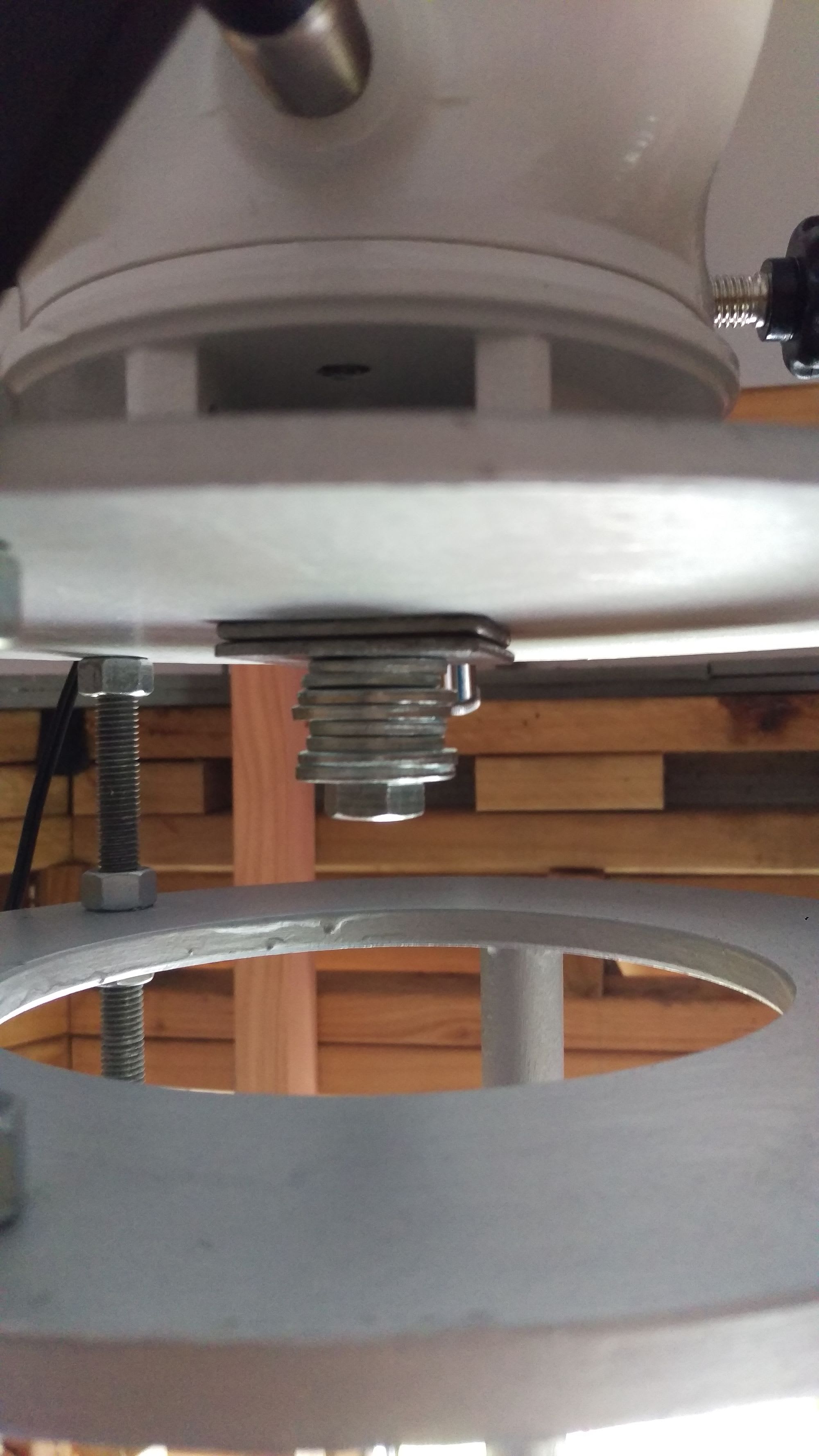

Officially back on the horse and collecting deep sky photons, the learning curve started again. I learned a lot about the mechanics of mounts after my many hours invested trying to fix my previous one, but I hadn't actually spent a lot of time imaging before this point. I didn't have time to realise just how many targets you can actually image well with an unmodified DSLR before I got hit with the urge to upgrade my camera.
I spent a lot of time agonising over my potential upgrade path. Whether to modify my 600D myself, ship it overseas and pay someone else to do it, buy another modified DSLR so I could keep using my 600D as a terrestrial cam, or just buy a dedicated astro cam (mono or colour?). The latter options are ideal but too expensive, the former options less so but their value proposition was greatly diminished by the fact I'd be spending a lot on overseas shipping/tax due to the non-existent availability of modification services in my part of the world and the tiny second hand market.
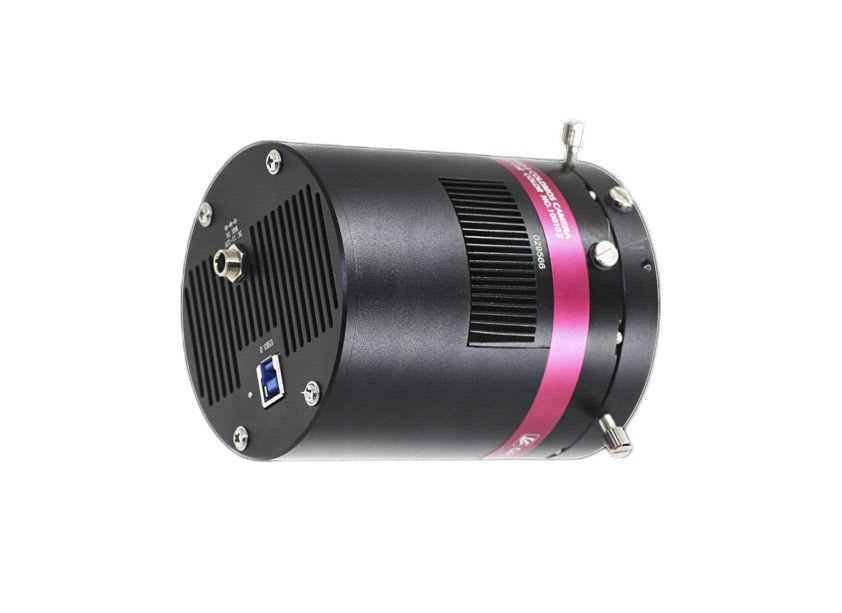

As luck would have it, an ideal candidate emerged in the form of an astromodified Canon 600D. It popped up on the American second hand market for about $350USD which was a reasonable price for a modified version of that model. What really made it a great value offer though, making up for the GST and shipping costs, was the addition of a cold finger peltier thermoelectric cooling mod. The lack of cooling for DSLR's is their main disadvantage over dedicated astro cams and modding them is also tricky to do well so to get one for a decent price was an exciting proposition.
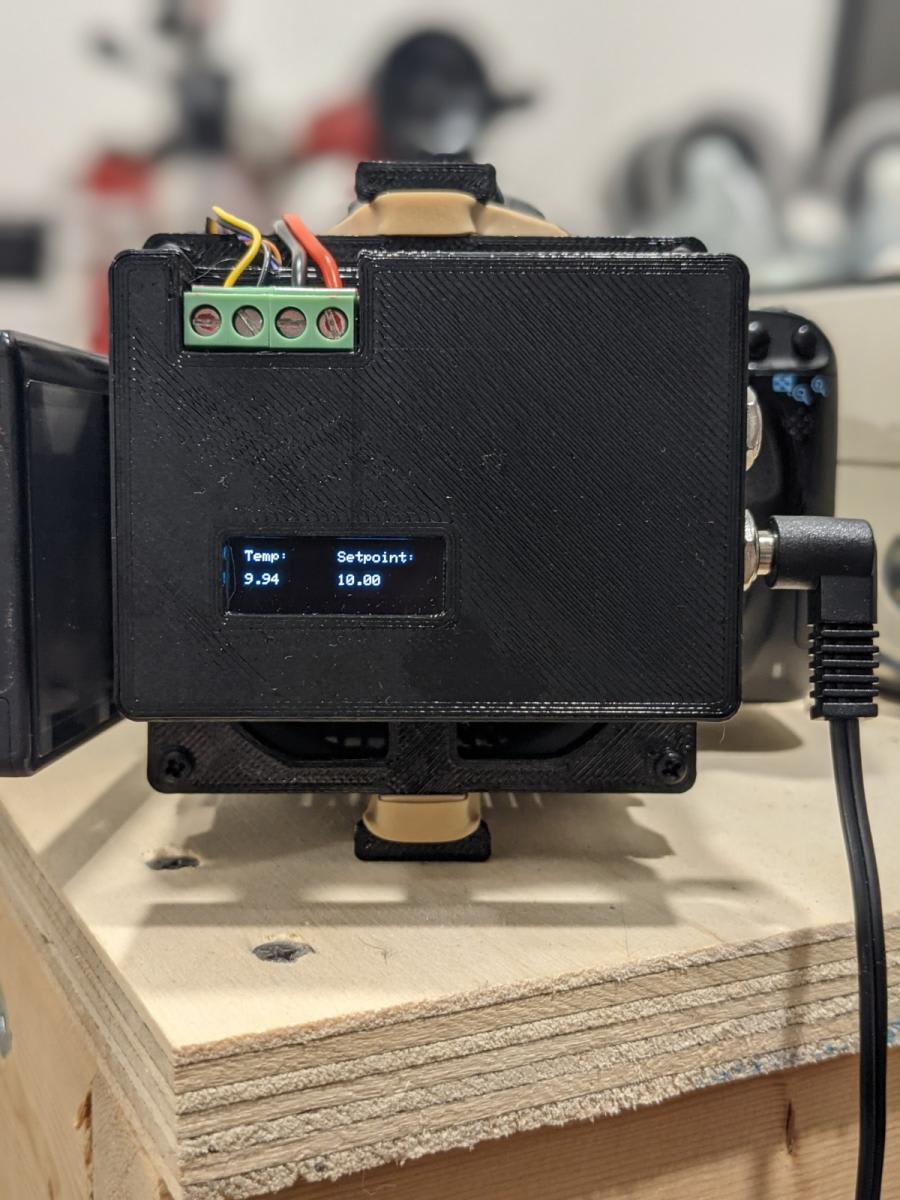
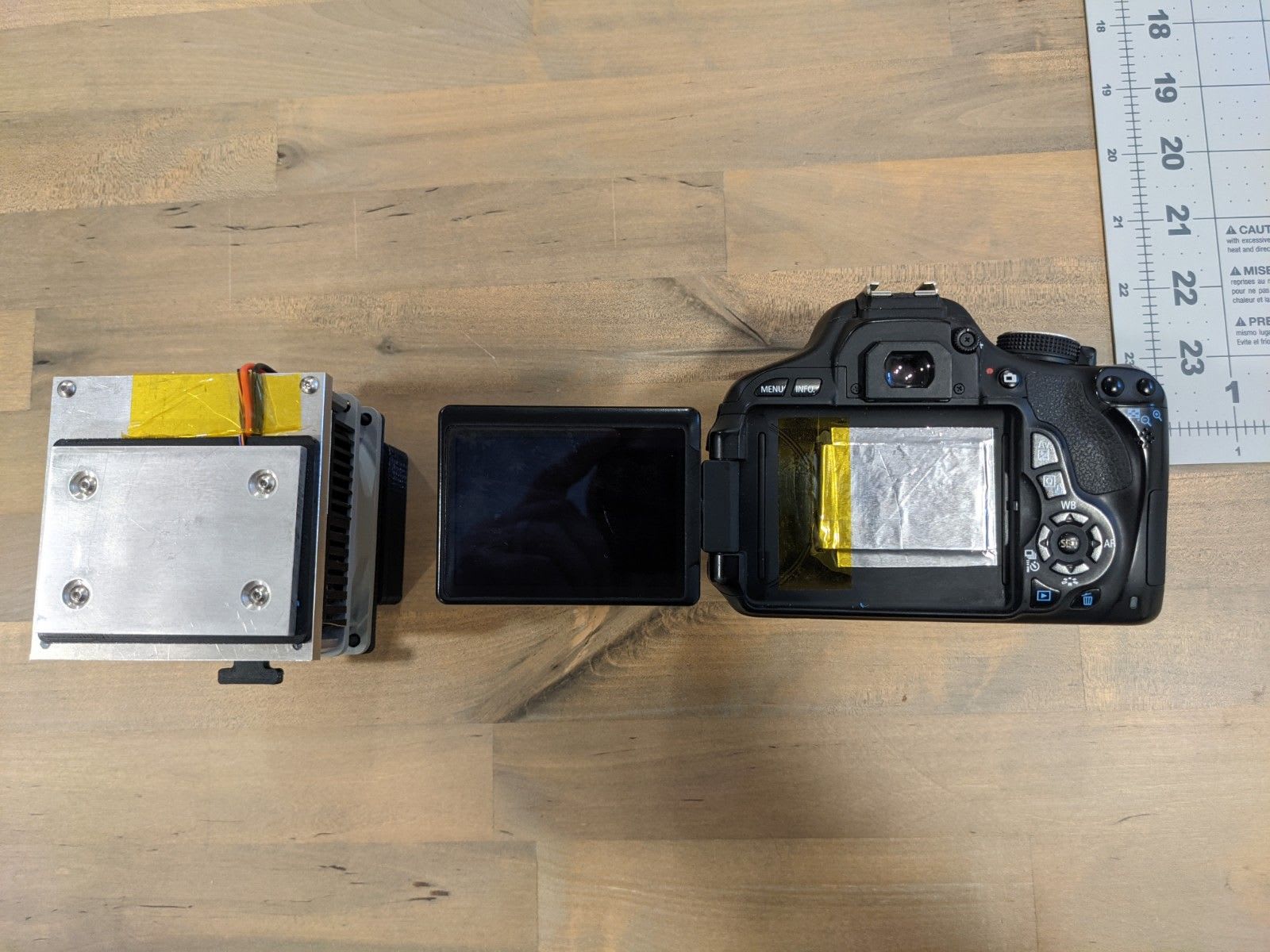
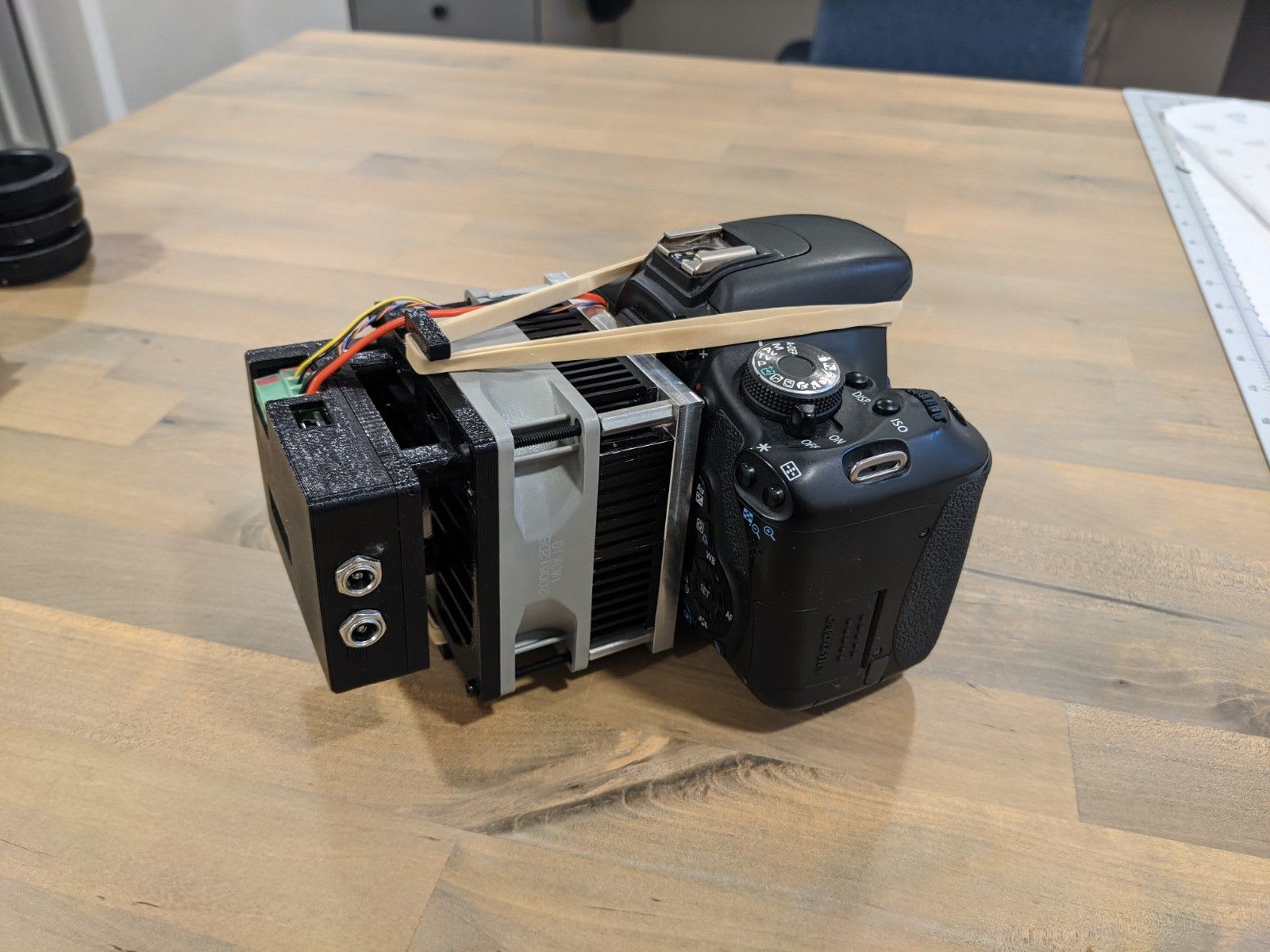
The cooler interfaces with the camera via an aluminium cold finger which routes from the sensors steel cage to the aft exterior of the camera as can be seen in the picture above. The foil and tape help seal off any air exchange with the interior to prevent buildup of moisture and condensation. The controller is an arduino board which allows setpoint cooling in 5c increments up to -20c but the fan can only manage up to about -15c from ambient as it's been selected for low vibration rather than power. This is sufficient though as the main benefit is the setpoint cooling which allows for the building of a reusable dark library, rather than just maximum thermal noise reduction on a individual sub basis.
In practice the camera works well even if it isn't everything I hoped for. The IR spectrum sensitivity is much improved over my unmodded 600D, as expected. The cooling is a bit more of a mixed bag as it doesn't seem to be as 'setpoint' as I hoped. The temperatures reported by the camera via EXIF aren't actually close to the setpoint on the controller and also aren't that consistent even if they are definitely a bit lower when the cooler is on. It's hard to gauge though as temperatures reported by Canon cameras via EXIF are apparently taken at the digic processor rather than the image sensor. Similarly, the temperature sensor for the cooler controller is in the cold block, which is fine, but while it lets us know the blocks temperature is consistent, it doesn't necessarily give us a reliable picture of how that's translating to the sensor. All I know is that my darks taken at 10c setpoint aren't always showing similar noise patterns. Especially those that we're taken during the day vs those taken at night, even at the same setpoint.
Ultimately though, my results are very good and relatively low noise by DSLR standards, even with only modest integration times (~1hr). I credit this to the increased signal gain of the IR filter mod, very dark skies and the magic of dithering, which I now have functioning smoothly.
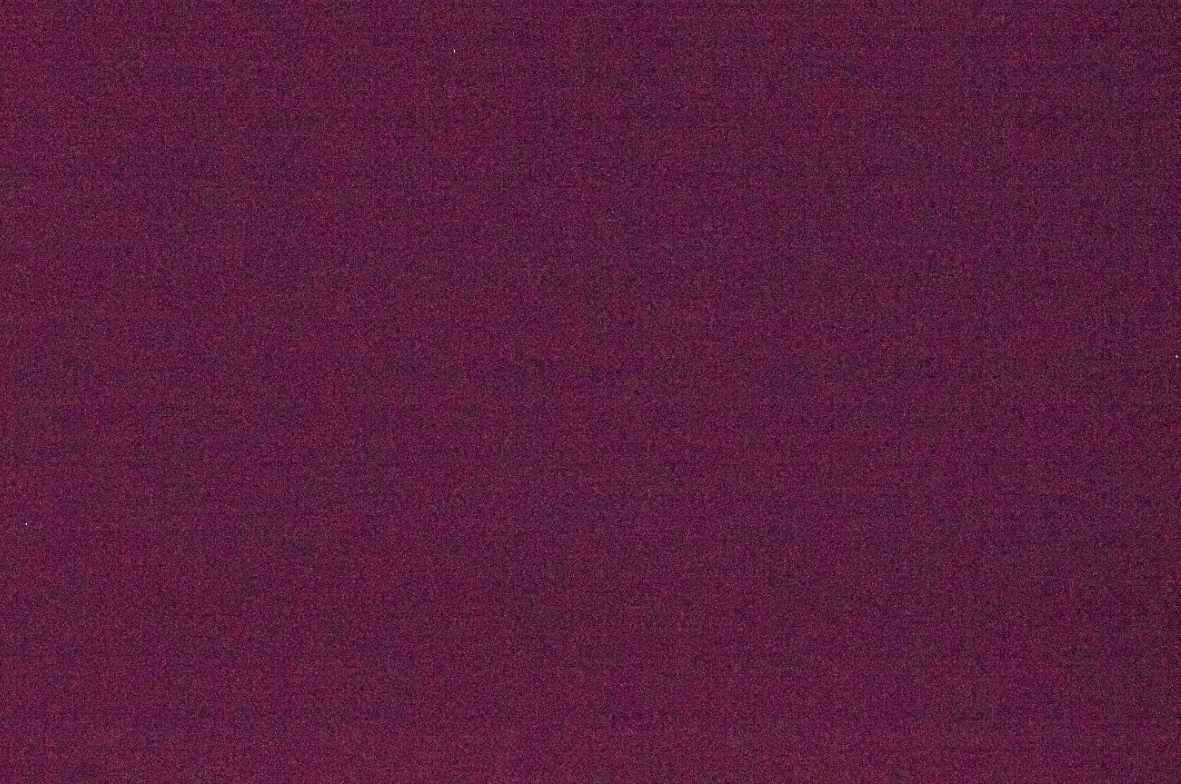
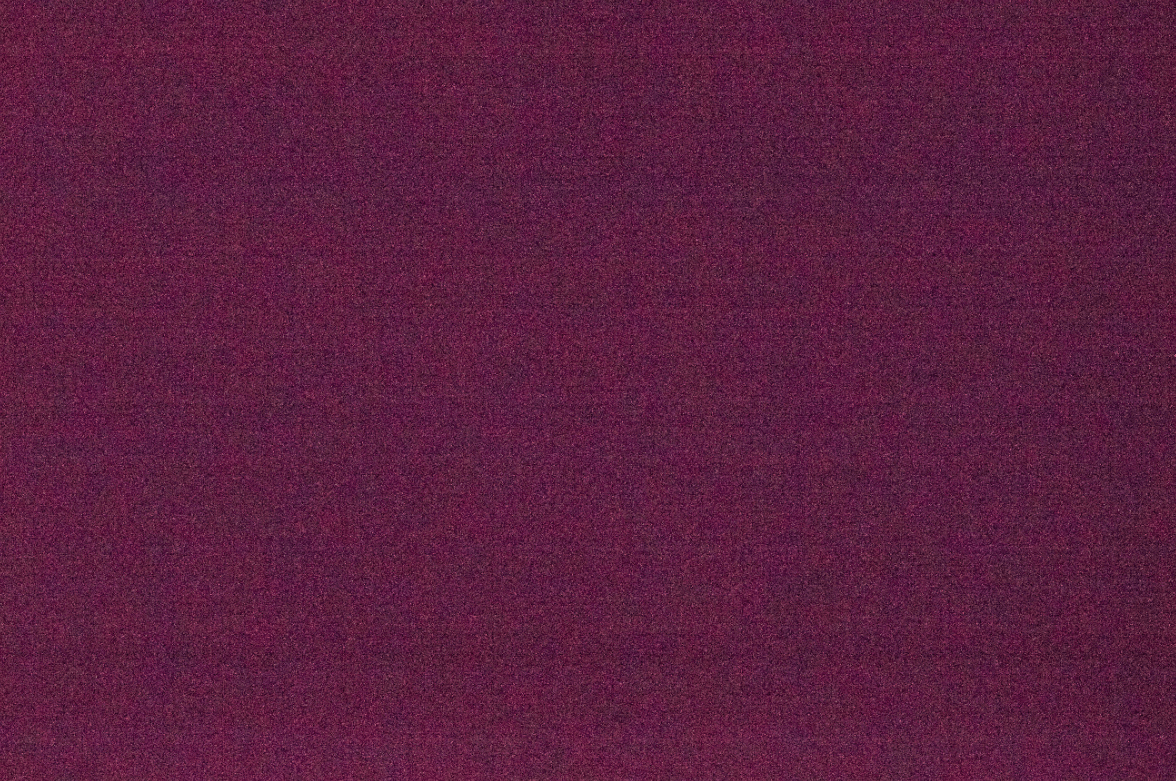
My final addition to the setup is a second scope! While I very much enjoy the results from my ED80T-CF, as my only scope it does leave me quite limited in my ability to capture and enjoy smaller objects like galaxies and such. I've had eyes on a Newtonian to give me a bit more reach and at a modest price but the tradeoff is having to deal with mechanical issues. By chance (again) another ideal candidate revealed it on the second hand market, albeit more locally this time. It's an 8" F4 Skywatcher Newt that the previous owner has modified to shore up the mechanical issues that generally plague these scopes such as the dodgy collimation screws and springs.
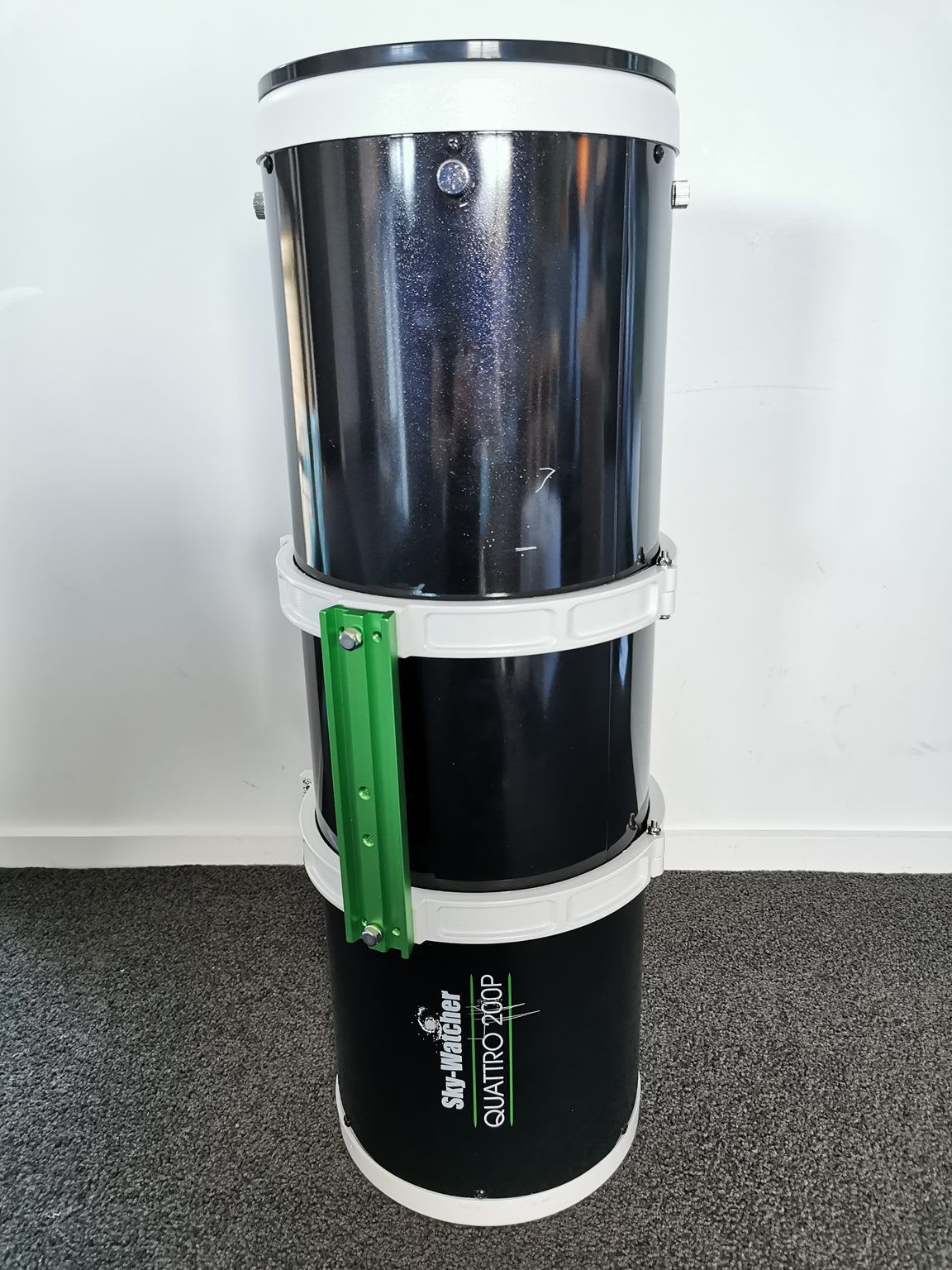
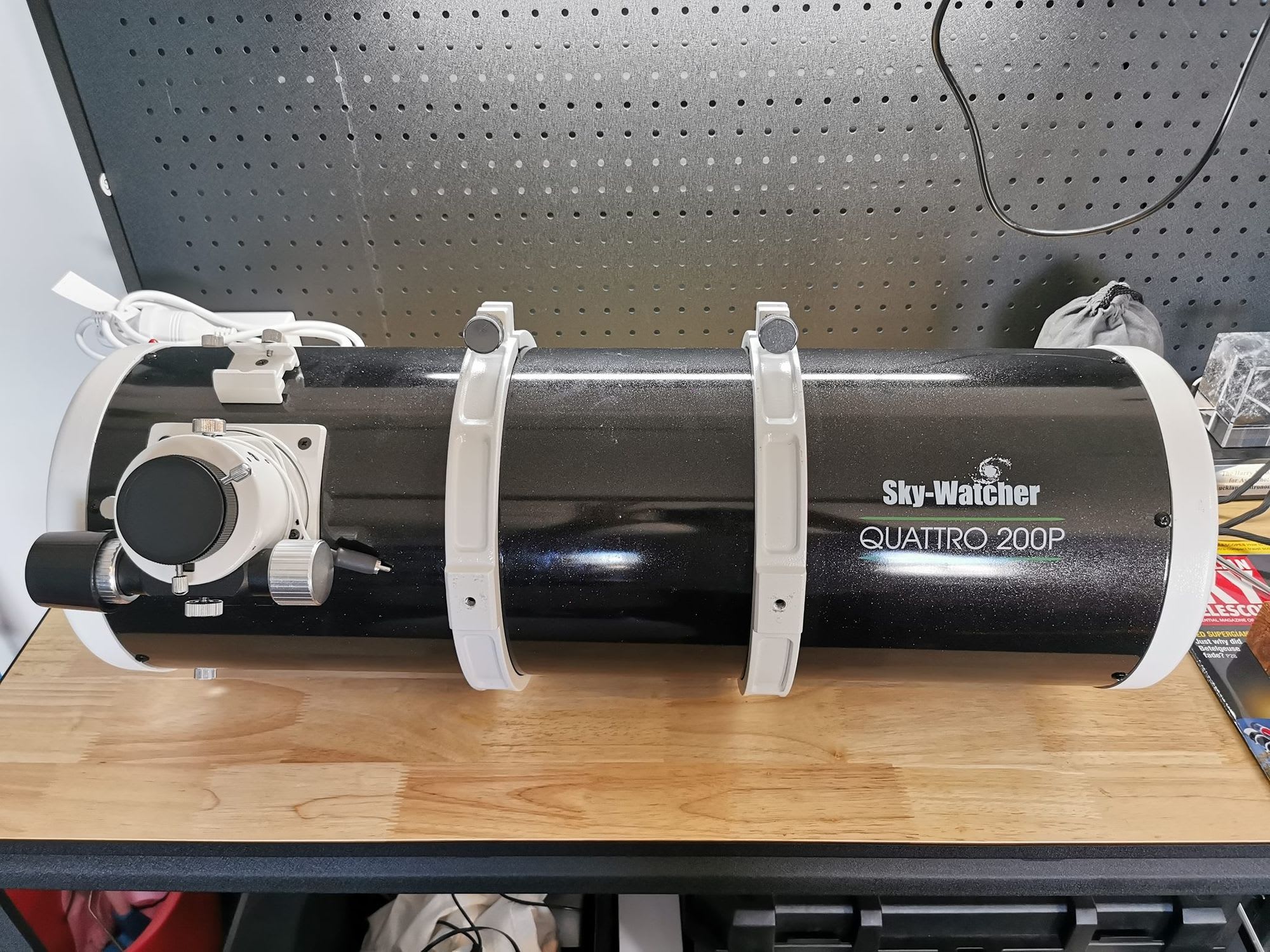
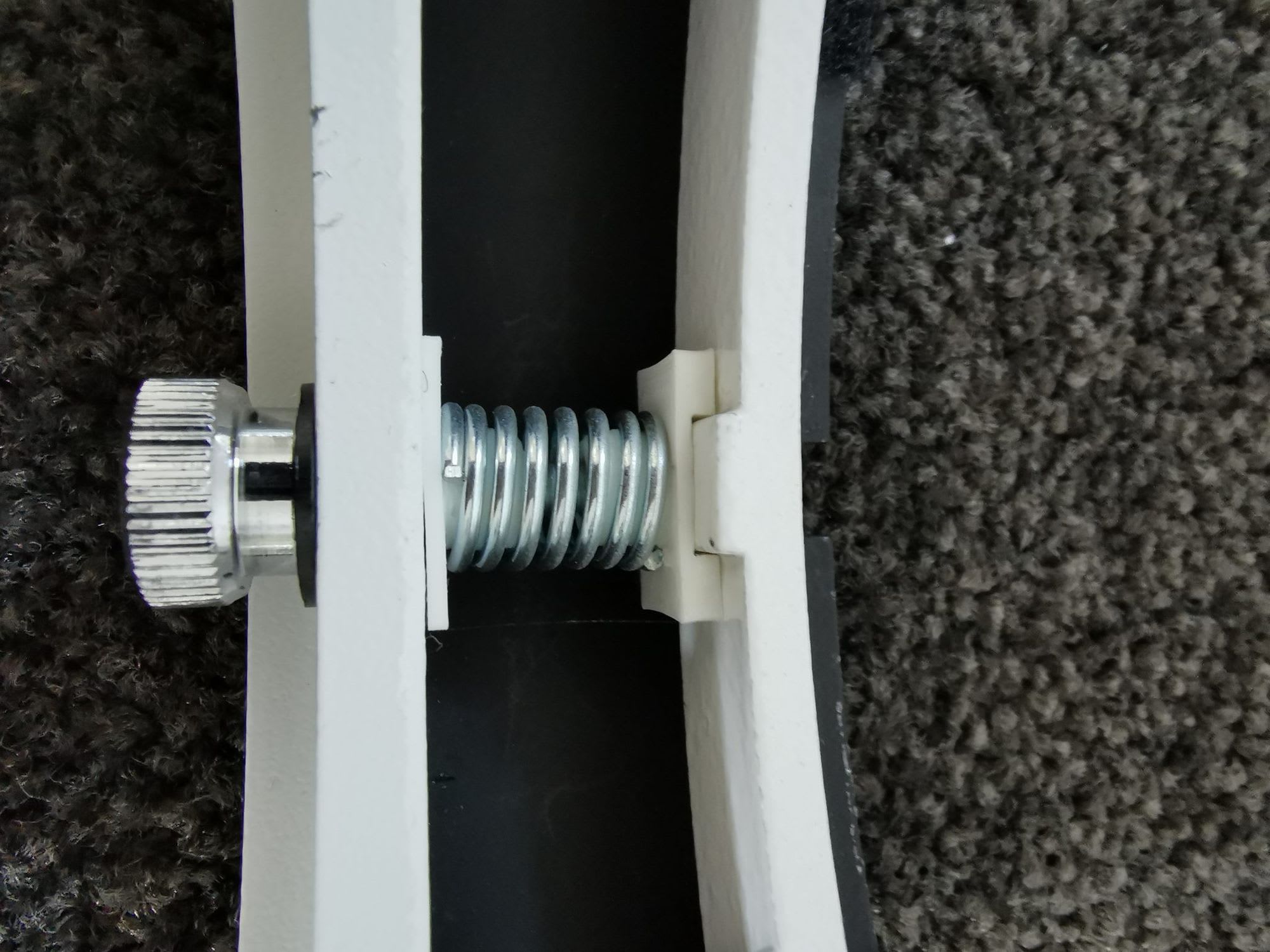
I'm yet to give it a spin as my coma corrector is stuck at the port and I'm still busy trying to capture some wider field targets with my refractor, before I commit to all the effort of mounting a new scope and having to cook up different cable management and all that annoying stuff. My plan is to piggyback the refractor on the newt so I can easily switch between wide field and, well, wider field. I figure I can switch my cameras between the two and use each one for guiding the other.
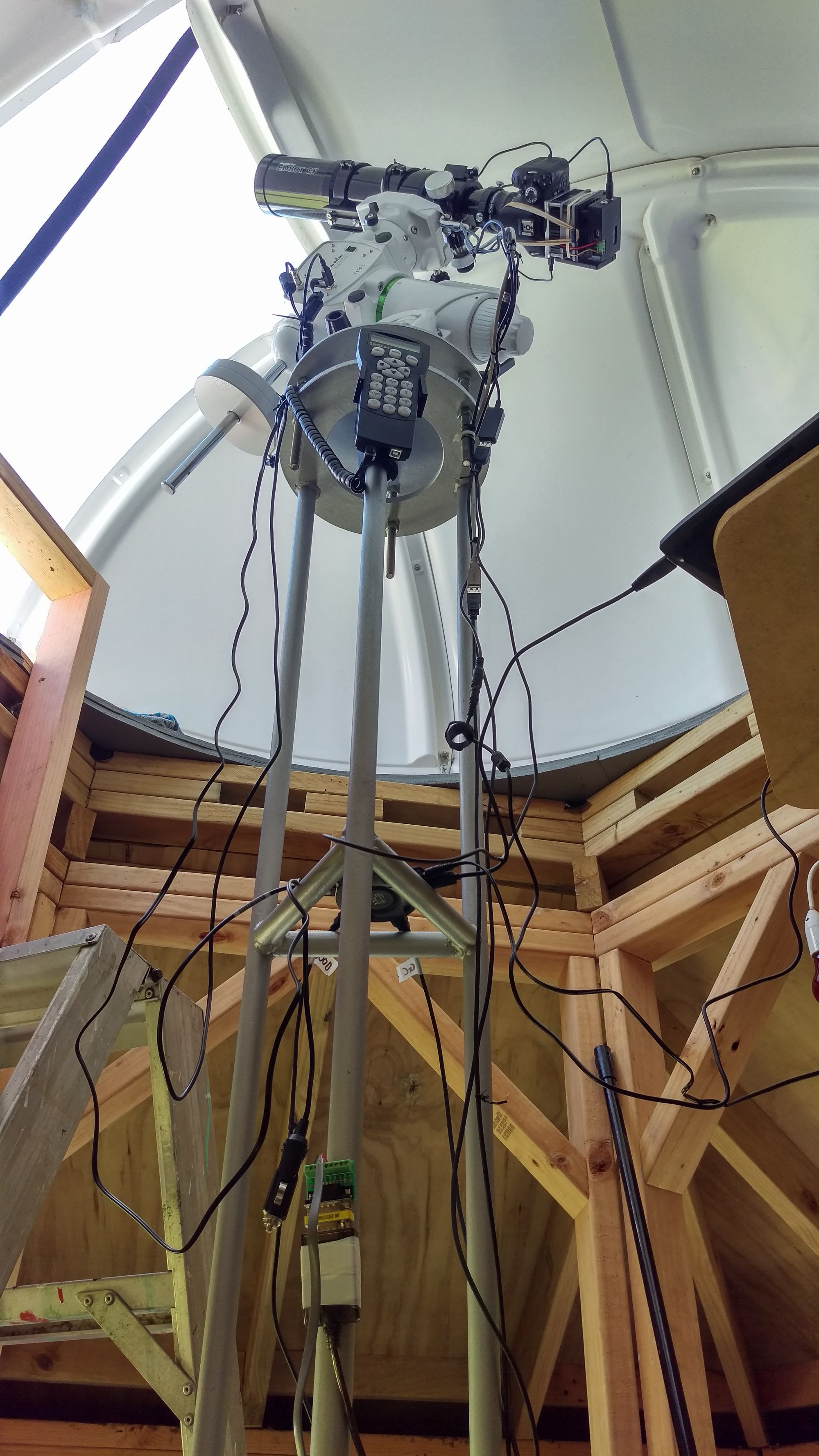
With so much new stuff on my plate that means more trials and tribulations. Already I have more learnings to document which I think could be helpful to others. Up next I'll probably being talking about how to make the most of free/cheap software options for stacking and processing or perhaps about my transition from APT to NINA and how they compare for DSLR users.
Until then.. Clear skies!